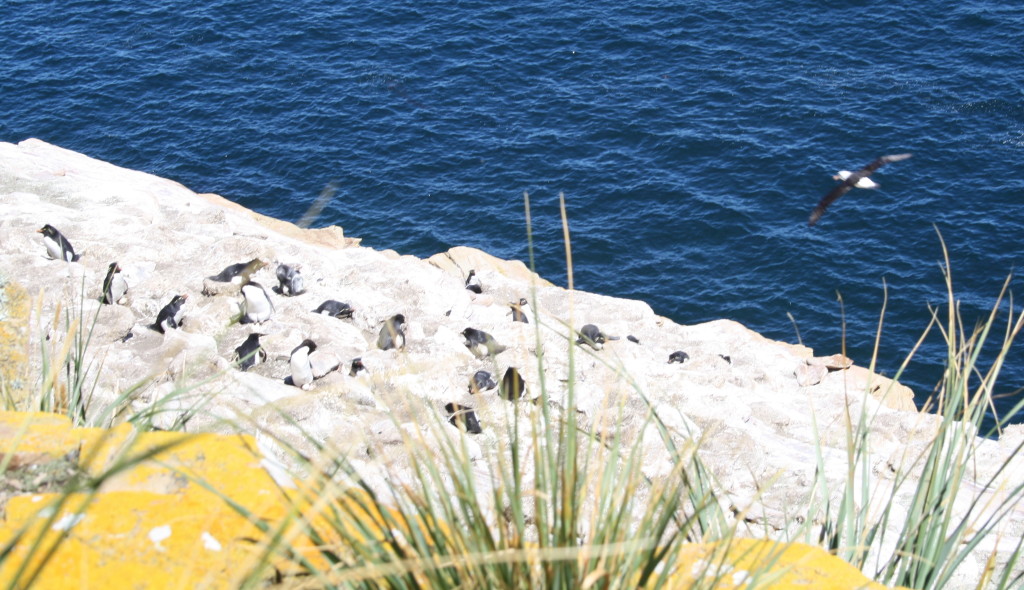Enjoyed meeting with Space to Roost project partners yesterday at Acadia, including the Blomidon Naturalists Society, Nature Conservancy Canada, Canadian Wildlife Service, NS Department of Natural Resources and Bird Studies Canada. We met in a boardroom with gigantic chairs that made me feel kid-sized. It was a collaborative group, and we reviewed the results from last year’s baseline surveys of beach use and shorebird disturbance in the Minas Basin. I presented on the short interviews with beach users that our field assistant Jaya undertook while doing monitoring. We then developed priorities for this coming season, and brainstormed ideas for implementation. Thanks to BSC’s Sue Abbott for organizing and keeping us on track.
Month: January 2017

My softcover edition of Sightlines (2012) looks like this.
While my first Kathleen Jamie experience, Findings (2005), came serendipitously while browsing the Halifax Central Library, my second was bought for me for Christmas by someone who knows me well. Dedicated “for the Island-goers” this spoke directly to me, fresh from the Falklands. Jamie is also a poet, and it is with such carefully chosen yet spare and modest language that she tackles these essays that work the vein between human and nature. Several concern remote islands and outcrops like St. Kilda and Rona, with historic human occupation that speaks of human ingenuity and fortitude, and where novel landscapes persist as a result. A favourite one conveys the zen experience of the Hvalsalen, the ‘whale hall’ in the Bergen Museum, its history and its renovation, which is recalled later in a meditation on the use of whalebone as memorial and in craft. One called ‘pathologies’ explores the human body as a habitat, for bacteria among other challenging organisms, inspired by our tendency to be selective about what we consider nature worth saving, or worthy of our awe. Yet another talks about Jamie’s experiences as a young archaeologist, excavating to ‘save’ history from development while erasing it. These are some of my favourites essays in this collection, which also have others focusing on natural phenomena like orca, aurora and seabirds. My preferences are not surprising given my interest in things social: after all, when presented with colonies of rockhopper penguins and black-browed albatrosses on West Falkland, I asked, “Can we go back and watch the shearing?”. Jamie needs to go next to the Falklands, given her fascination for remote islands, wind, and the history of human industry including whaling and agriculture. I think I’ll write and tell her.
 Today marks the soft launch of the farm stewardship and incentive program for wood turtles, Wood Turtle Strides. Funded by Environment and Climate Change Canada, and hosted by the Nova Scotia Federation of Agriculture, this program builds off the last six years of research on farm biodiversity in my lab and the collaborative relationships developed with the above organizations and others such as the Nova Scotia Department of Natural Resources. Wood Turtle Strides will partner with interested farmers who have critical habitat for wood turtles on ways to reduce mortality. Program Manager and lab alumnus, Simon Greenland-Smith, was on CBC Radio 1 Information Morning today to talk about the program, directing interested farmers to learn more via the new Facebook page, where he has also posted information about wood turtles such as how to identify them, and our two animated extension videos (modified harvest and riparian management).
Today marks the soft launch of the farm stewardship and incentive program for wood turtles, Wood Turtle Strides. Funded by Environment and Climate Change Canada, and hosted by the Nova Scotia Federation of Agriculture, this program builds off the last six years of research on farm biodiversity in my lab and the collaborative relationships developed with the above organizations and others such as the Nova Scotia Department of Natural Resources. Wood Turtle Strides will partner with interested farmers who have critical habitat for wood turtles on ways to reduce mortality. Program Manager and lab alumnus, Simon Greenland-Smith, was on CBC Radio 1 Information Morning today to talk about the program, directing interested farmers to learn more via the new Facebook page, where he has also posted information about wood turtles such as how to identify them, and our two animated extension videos (modified harvest and riparian management).
Everyone else is padding out holiday media with year-end lists, and so shall I.
The best landscape-related books I read in 2016:
- Robin Wall Kimmerer, Gathering Moss (2003)
- Kathleen Jamie, Findings (2005)
- Ronald Blythe, Akenfield (1969)
- Jonathan Raban, Hunting Mister Heartbreak (1990) – somehow I neglected to blog this one
- Graham Swift, Waterland (1983)
- Anna Quindlen, Miller’s Valley (2016)
- Alexandra Harris, Weatherland (2016)
My most popular posts of the year were those focussed on the Mactaquac decision and process:
- Mactaquac commentary abounds, June 17
- Mactaquac bathymetry, Oct 7
- Open and transparent? May 27
- CCUEN conference, May 13 (someone must have tweeted this one)
- Mactaquac recommendations, May 28 (tho not officially a blog post)
My favourite yet most underappreciated post (IMHO) was When to call a social scientist (or how to fool one), Sept 20
My favourite scholarly experiences of the year:
- Falkland Islands fieldwork (blogged here, here, and here)
- World Congress on Silvo-Pastoral Systems in Evora, Portugal (blogged here and here)
- International Symposium for Society and Resource Management, Michigan (blogged here, here, and here)
- Yan Chen’s thesis defense (blogged here) and spinoff thinking and new collaborations around Culturomics (starting here)
- Engaging in the Mactaquac process through papers (blogged here and here), storymap coverage (here), and commentary (see popular posts above, as well as here, here, here, and here)
Here’s to a fun and productive 2017.



